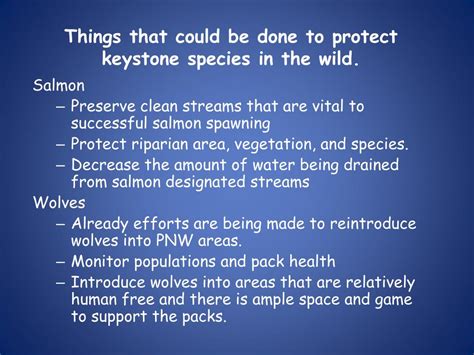The concept of keystone species is a fundamental aspect of ecology, highlighting the crucial role that certain species play in maintaining the structure and function of their ecosystems. These species, often referred to as "ecosystem engineers," have a disproportionate impact on their environment and the other species that inhabit it. The loss of a keystone species can have far-reaching consequences, leading to significant changes in the ecosystem's composition and potentially even its collapse. In this article, we will delve into the world of keystone species, exploring their characteristics, examples, and the importance of conservation efforts aimed at protecting these vital components of our planet's biodiversity.
Key Points
- Keystone species are species that have a disproportionate impact on their environment and play a unique role in maintaining the structure and function of their ecosystems.
- These species can be plants or animals and are often characterized by their ability to modify their environment in ways that benefit other species.
- The loss of a keystone species can have significant consequences, including changes in population dynamics, community composition, and ecosystem processes.
- Conservation efforts aimed at protecting keystone species are crucial for maintaining the health and resilience of ecosystems.
- Examples of keystone species include sea otters, wolves, and coral reefs, which all play critical roles in their respective ecosystems.
Characteristics of Keystone Species

Keystone species are typically characterized by their ability to modify their environment in ways that benefit other species. This can be achieved through various means, such as the creation of habitat, the provision of food, or the regulation of predator-prey dynamics. For example, beavers are considered a keystone species in many North American ecosystems due to their ability to build dams, which creates wetlands and habitats for numerous other species. Similarly, sea otters play a crucial role in maintaining the balance of kelp forests, which provide habitat for a diverse array of marine species.
Types of Keystone Species
Keystone species can be broadly categorized into several types, including ecosystem engineers, predatory keystones, and mutualistic keystones. Ecosystem engineers, such as beavers and coral reefs, modify their environment in ways that create habitat for other species. Predatory keystones, such as wolves and sharks, regulate the populations of other species, maintaining the balance of their ecosystems. Mutualistic keystones, such as pollinators and seed dispersers, form symbiotic relationships with other species, providing essential services that benefit both parties.
| Keystone Species Type | Example | Description |
|---|---|---|
| Ecosystem Engineer | Beaver | Creates habitat through dam building |
| Predatory Keystone | Wolf | Regulates prey populations, maintaining ecosystem balance |
| Mutualistic Keystone | Pollinator | Provides essential services, such as pollination, to other species |

Examples of Keystone Species

There are numerous examples of keystone species across various ecosystems, each playing a unique role in maintaining the structure and function of their environment. Sea otters, for instance, are a keystone species in kelp forests, where they prey on sea urchins that would otherwise overgraze the kelp. The loss of sea otters has been linked to the decline of kelp forests, highlighting the critical role that these animals play in maintaining the balance of their ecosystem. Similarly, wolves are a keystone species in many terrestrial ecosystems, regulating the populations of herbivores and maintaining the structure of vegetation.
Conservation Implications
The conservation of keystone species is essential for maintaining the health and resilience of ecosystems. The loss of these species can have far-reaching consequences, including changes in population dynamics, community composition, and ecosystem processes. As such, conservation efforts should be targeted at protecting keystone species and their habitats, as well as addressing the broader environmental issues that threaten their survival. This can include the establishment of protected areas, the regulation of human activities that impact keystone species, and the restoration of degraded habitats.
What is a keystone species?
+A keystone species is a species that has a disproportionate impact on its environment and plays a unique role in maintaining the structure and function of its ecosystem.
Why are keystone species important?
+Keystone species are important because they play a critical role in maintaining the balance of their ecosystems, and their loss can have significant consequences for the environment and other species.
How can we conserve keystone species?
+Conservation efforts aimed at protecting keystone species can include the establishment of protected areas, the regulation of human activities that impact keystone species, and the restoration of degraded habitats.
In conclusion, keystone species play a vital role in maintaining the structure and function of their ecosystems, and their conservation is essential for maintaining the health and resilience of the natural world. By understanding the characteristics and roles of keystone species, we can better appreciate the complex interactions within ecosystems and work to protect these critical components of biodiversity. As we move forward in our efforts to conserve and manage ecosystems, it is essential that we prioritize the protection of keystone species, recognizing the significant impact that they have on the world around us.



